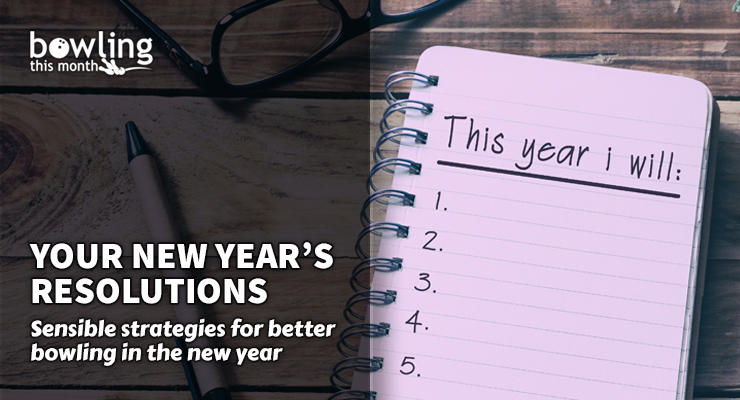Article Contents
- 1. I will clean my bowling balls EVERY TIME I bowl
- 2. I won’t allow my older bowling balls to die
- 3. I will buy new bowling balls only when I need them
- 4. I’m going to try 3D targeting
- 5. I’m not going to be obsessed with hitting specific boards
- 6. I’m going to get a grip…a new grip, that is
- 7. I’m changing my attitude about spares
- 8. I’m going to take a good look at my game
- 9. I’m going to take better care of myself
Note: This article is only available to Bowling This Month subscribers.
We love the holidays, but let’s face it: they can be stressful, what with all the planning and spending and overeating and visits to and from relatives. Thankfully, the holidays have come and gone, and the time for gift-giving, stale fruitcake, and general frivolity is slowly fading in our rearview mirrors.
The new year is upon us, and with it comes a choice: do we make the New Year’s resolutions we make every January—you know, get in shape, eat more kale…that sort of thing—or do we chicken out? It’s a tough call.
Luckily, you’ve come to the right place: I’ve done the work for you. Here’s a list of New Year’s resolutions that are everything you’ve always wanted them to be: inexpensive and easy to keep.
In the spirit of the season, here are my New Year’s resolutions. Feel free to use them, add to your own list, or start eating more kale.
I will clean my bowling balls EVERY TIME I bowl
I can’t tell you how important this is, but I’ll try.
Modern bowling balls won’t last forever. Even the hardest balls on the market are not nearly as hard as the rubber balls of yore. (I still use my rubber AMFlite Magic Line 3-Dot for spares. Old? I bought it in the mid-1960s.)
A bowling ball’s coverstock—its outer shell—is its most important component, contributing the most to its hook and hitting power. That’s because a modern reactive resin bowling ball—especially a reactive marketed as “high performance”—is, first and foremost, just a big, heavy sponge. And like a real sponge, it is porous and absorbent. It soaks up oil as it rolls down the lane, and it typically encounters a dry surface each time it rotates thanks to track flare. It’s that dry surface that contributes the most to the ball’s efficiency.
But there’s a dark cloud of bad news hovering here: when a bowling ball sucks up lane oil, it loses some of its hook and hitting power. As time passes, it loses more and more of that hook and ...
Already a premium member? Click here to log in.


